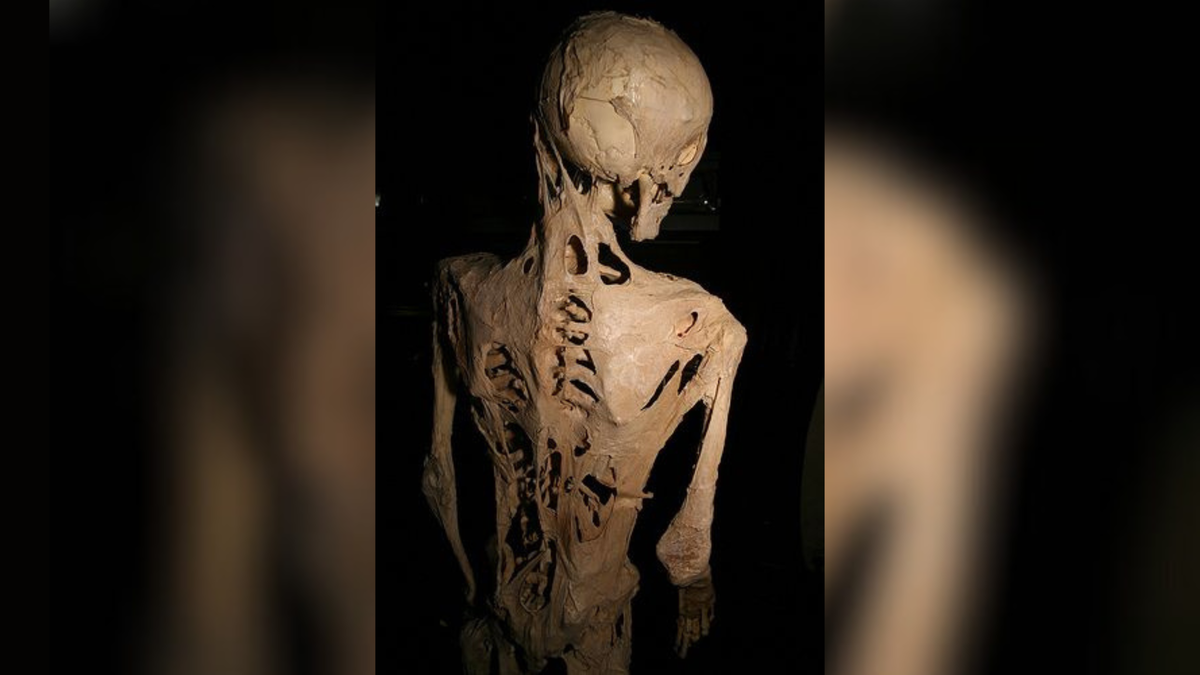Disease name: Fibrodysplasia ossificans progressiva (FOP), also known as “stone man disease” or “Münchmeyer disease”
Affected populations: FOP is an extremely rare disease that is estimated to affect around 1 in 1 million people. It does not affect one demographic more than others; anyone may develop FOP, regardless of their sex, race or ethnicity.
Causes: FOP is caused by a mutation in a gene called ACVR1, which is involved in a cellular process that regulates the formation of the skeleton in the womb and then orchestrates skeletal repairs throughout life. The mutation causes the ACVR1 gene to become more active, leading to inappropriate bone formation.
In most cases, this mutation occurs randomly in people who have no family history of the disease. However, in rarer instances, patients may inherit the mutation from one parent who is affected by the condition. Only one copy of the mutated gene is required to cause FOP.
Related: Céline Dion’s muscle spasms caused by rare disorder: What is stiff-person syndrome?
Symptoms: FOP causes the body’s muscle and connective tissue to be gradually replaced with bone tissue. This essentially forms a second skeleton that impedes the person’s movement. One of the first signs that someone has FOP is that they have shortened and turned-in big toes from birth. Around 50% of patients will also have similarly malformed thumbs.
Symptoms of FOP usually start during childhood, with some of the earliest affected areas normally being the neck, back, chest, arms and legs. Patients may also experience “flare-ups,” which are episodes of tissue swelling, pain and stiffness that worsen the condition. These flare-ups can occur spontaneously, or they may be triggered by some sort of trauma, such as an injury, surgery or a viral infection, like the flu. Other symptoms of FOP include difficult speaking or eating (if the mouth is affected and cannot open properly), as well as hearing loss and spinal deformity.
By age 30, most patients with FOP are completely unable to move. The average life expectancy of people with the disease is around 56 years. The most common cause of death is cardiorespiratory failure due to patients losing the ability to breathe.
Treatments: Painkillers and anti-inflammatory drugs, such as corticosteroids, can help manage patients’ symptoms. Patients may also be advised to take extra precautions to minimize the risk of injury and infection, and they may engage in occupational therapy to help them carry out daily activities.
Doctors can’t conduct surgery to remove excess bone tissue, as this could inadvertently trigger further flare-ups of the condition.
In 2023, the U.S. Food and Drug Administration approved an oral drug called palovarotene (brand name: Sohonos) for the treatment of FOP in females 8 years and older and males 10 years and older. This approval followed a clinical trial in 107 patients with the condition. Those treated with the drug showed a reduction in excessive bone formation — around 54% lower than controls.
This article is for informational purposes only and is not meant to offer medical advice.
Ever wonder why some people build muscle more easily than others or why freckles come out in the sun? Send us your questions about how the human body works to community@livescience.com with the subject line “Health Desk Q,” and you may see your question answered on the website!
